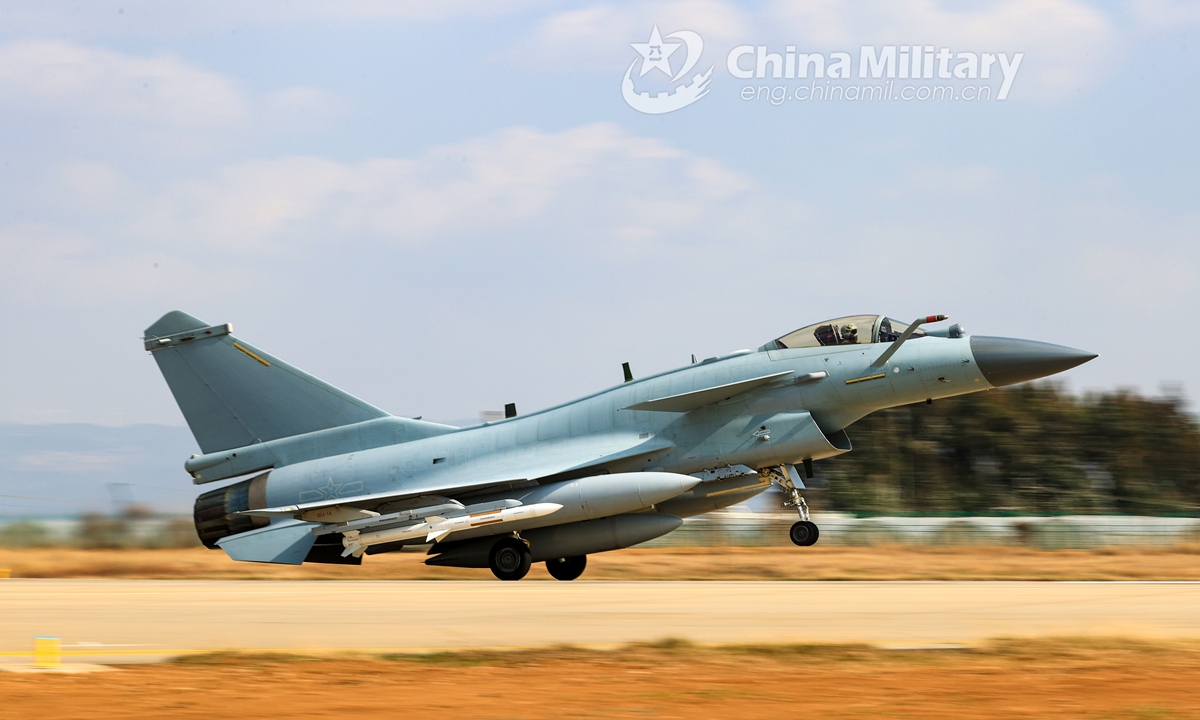Pakistan’s newly inducted J-10C fighters are making their mark in a major aerial exercise, where they ‘challenge’ Eurofighter Typhoons of the Qatar Emiri Air Force for the first time.
On January 10, 2024, the Pakistan Air Force officially announced that Qatari Eurofighter Typhoons and Pakistani Chengdu J-10Cs are currently engaged in joint air exercises known as Zilzal-II, hosted by Qatar.
The exercise aims to simulate a “realistic aerial warfare scenario” to evaluate both air forces’ operational readiness.
According to the PAF, the exercise is one of the most complex joint air force drills, aiming to foster interoperability between the two allied nations and create a shared learning space.
“During the exercise, PAF’s newly inducted state-of-the-art J-10C fighter aircraft will flex its muscles against Eurofighter jets of Qatar Emiri Air Force in their first-ever face-off in an aerial exercise,” the official statement informed.
Pakistan welcomed the first batch of Chinese-developed J-10Cs into its air force in March 2022. The precise number of deployed J-10 aircraft in the ongoing exercise remains undisclosed.
The activities are centered at the Doha airbase, near the capital’s main airport, in contrast to the Al-Udeid airbase, where a notable US presence is observed.
“The successful induction and operationalization of the J-10C fighter jets in PAF’s fighter fleet and their participation in yet another international exercise in an unprecedented short span of time is a remarkable achievement,” the Pakistan Air Force said.
Highlighting the significance of the J-10Cs’ participation, the PAF emphasizes that it represents a notable milestone in their pursuit of a “technologically advanced and formidable Air Force.”
The service also pointed out that the swift acquisition and operationalization of these advanced fighter aircraft underscore the PAF’s commitment to maintaining a cutting-edge force capable of addressing evolving challenges and safeguarding Pakistan’s airspace proficiently.
Nonetheless, the exercise is expected to offer valuable insights into the relative effectiveness of the Chinese platform and give an insight into its capabilities.
Both aircraft are outfitted with cutting-edge active electronically scanned array radars and can employ beyond-visual-range air-to-air missiles. Specifically, the Eurofighter utilizes the MBDA Meteor, while the J-10C relies on the export version of the PL-15.
Zilzal II Joint Aerial Exercise
Zilzal-II, designed to enhance joint planning mechanisms, is a significant milestone in fortifying the enduring defense partnership between the two closely aligned nations.
The first iteration of Zilzal, held in 2020, concentrated on reinforcing the established defense collaboration between the two nations. During the Zilzal-I exercise in 2020, Pakistan’s JF-17 Thunder fighters operated alongside Qatar’s Mirage 2000s.
Zilzal II, building upon this groundwork, serves as a platform that Pakistan characterizes as fostering greater understanding, cooperation, and friendship between the Pakistan Air Force and the Qatar Emiri Air Force. This collaborative effort is envisioned to contribute to regional stability and security.
In addition to the Eurofighter Typhoons, Qatar possesses other advanced fighter aircraft, namely the Boeing F-15QA Advanced Eagle and the Dassault Rafale.
However, the specific details regarding whether the PAF J-10s will engage with other Qatari aircraft in the ongoing exercise remain uncertain.

Meanwhile, Pakistan’s decision to procure the J-10 was a strategic maneuver with the specific intent of countering India’s acquisition of the Rafale.
Both China and Pakistan experts have positioned it as a powerful rival to the Rafale fighter jet of the Indian Air Force.
The J-10C, classified as a 4.5-generation medium-size fighter jet, surpasses the power and capabilities of the China-Pakistan jointly developed lightweight fighter jet, the JF-17, currently in active service with the Pakistan Air Force.
The JF-17 of Pakistan’s Air Force has reportedly been facing operational challenges, particularly in maintenance, as US sanctions have disrupted the availability of spare parts in the global market.
This dependence on China for essential components has led to delays and disruptions in the supply chain, resulting in grounded aircraft within the JF-17 fleet.
The precise number of non-operational JF-17s has not been disclosed by Pakistani authorities, but reports suggest that a segment of the fleet is presently grounded due to the aforementioned challenges.
The J-10Cs can establish connectivity with their Chinese counterparts using the KJ-500 early warning aircraft of the People’s Liberation Army (PLA) Air Force. Reports previously suggested that the Pakistan Air Force has also shown interest in procuring KJ-500 early warning aircraft.
- Contact the author at ashishmichel(at)gmail.com
- Follow EurAsian Times on Google News
The post Chinese-Origin J-10C Fighter ‘Challenges’ Eurofighter Typhoon As Pakistan, Qatar Hold Aerial Drills appeared first on Latest Asian, Middle-East, EurAsian, Indian News.
